We didn’t know it at the time, but this fall we caught a truly ancient Black-headed Grosbeak! And there’s quite a story behind him.
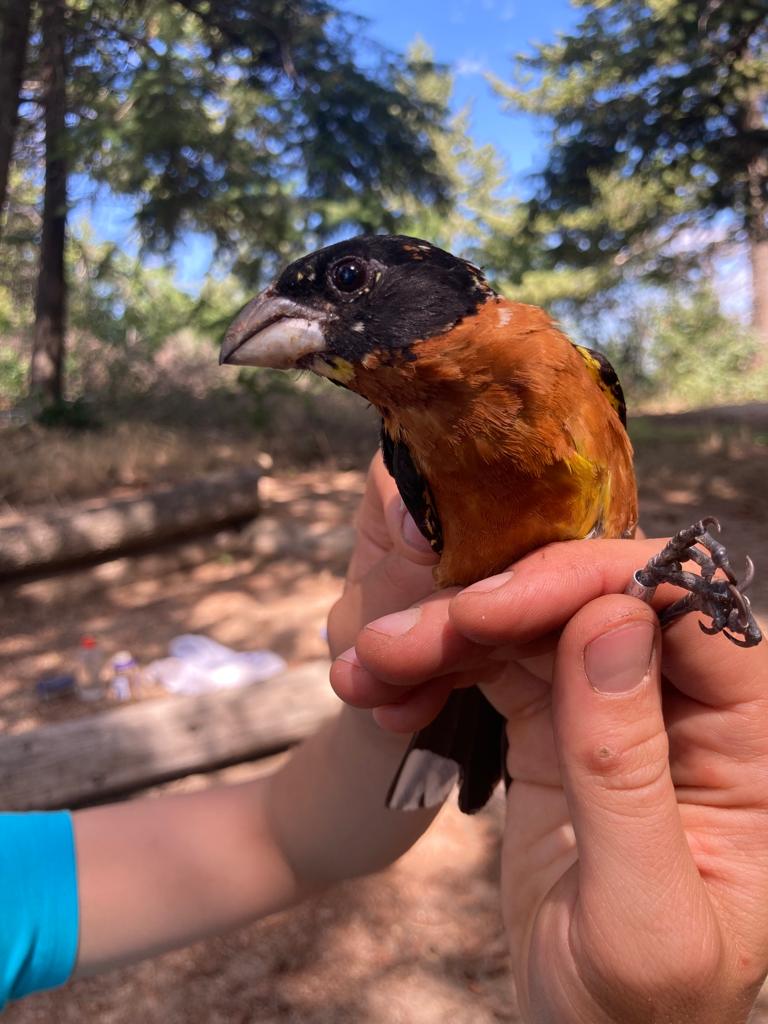
Each winter as we proof our data Rob runs through our recaptures to make sure the band numbers match our inventory before submitting it to the Bird Banding Lab. This year, we noticed quite an odd record: a band sequence we hadn’t used in more than a decade! We searched for band number 1991-19015 in our database.
Jay found that this male grosbeak was first banded as a one year old (second year) during a summer MAPS banding day at Lucky Peak. July 5th, 2008.
Two years later we saw him again, on July 29th, 2010.
Then, we didn’t see him again for TWELVE years! Returning to Lucky Peak this year (July 21st, 2022), he was a whopping 15 years old!
Looking at Bird Banding Lab information, this would set a new world-record for Black-headed Grosbeaks. And beat the old record by 3 years!
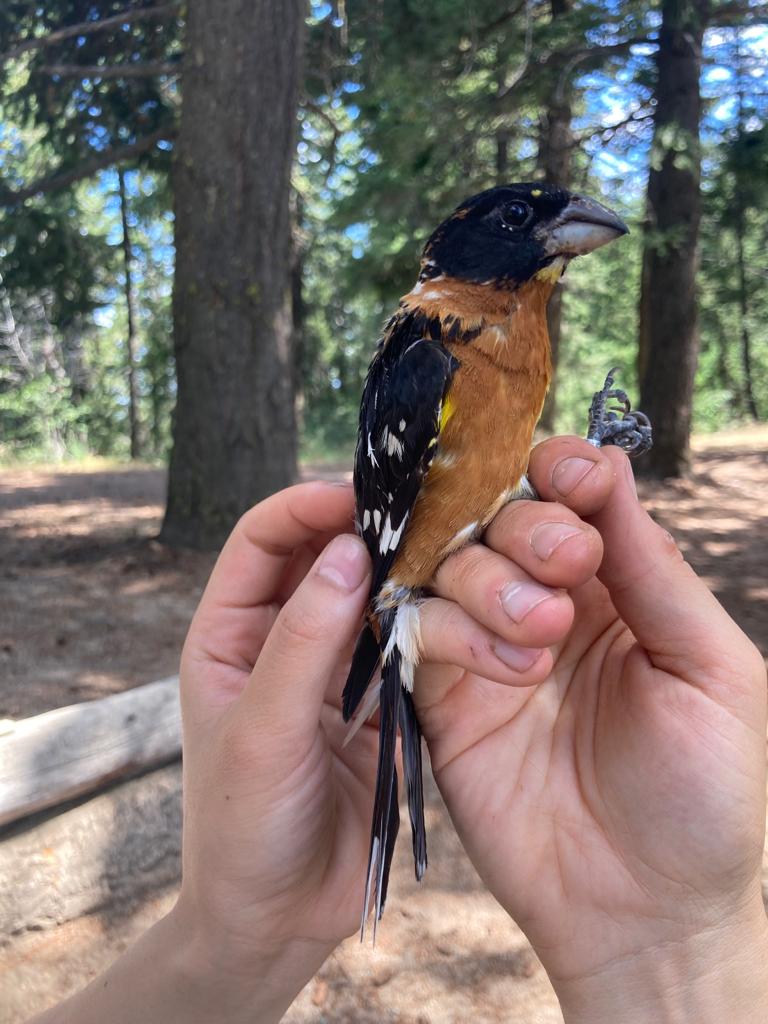
We honestly didn’t believe it at first. Could we have mis-read the band number? We checked and checked, but there was no way. This really was a 15-year-old grosbeak! Other songbird species hold records of birds living a decade and some have records into their teens, but this is by far the oldest songbird we’ve ever recaptured!
We don’t often take photos of common species at the station, but when Heidi learned that the bird was banded during her first summer as a songbird banding volunteer she wondered: “Did I take a photo of this bird?” Back then she took pictures of almost everything because it was all new and exciting.
Sure enough, she had a photo with a date and time stamp to match: 8:57 AM on July 5th (her fourth time visiting Lucky Peak). Even better, this sassy grosbeak was biting Jay’s finger in the photo!
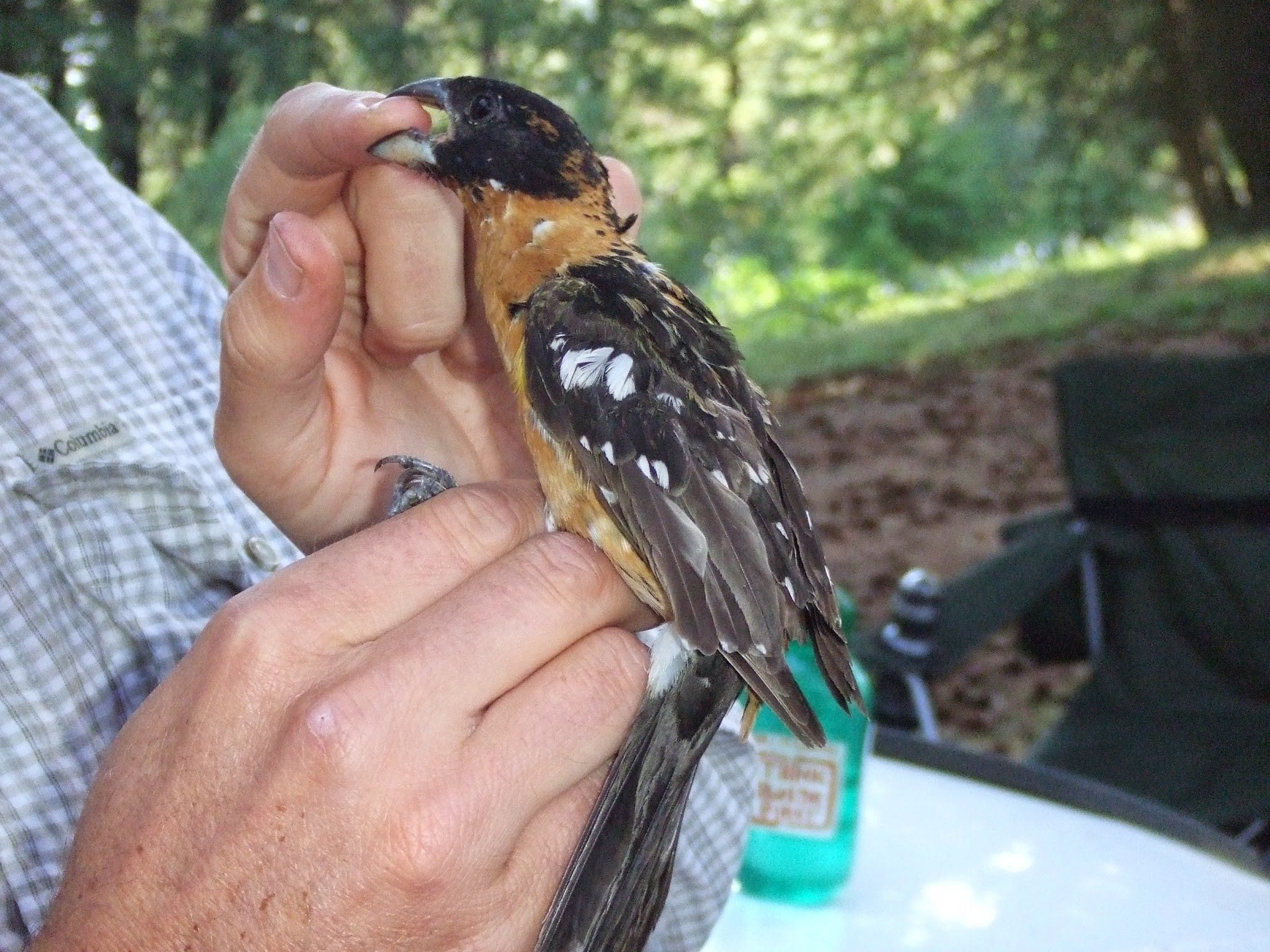
How cool to have a photo of the exact bird when it was first banded!
Then Jay reached out to Lucian and the other songbird banders. Was there a chance we had taken a picture of this bird again? We figured the chances were low. But, it didn’t take long before the banders chimed in. Yes, we did in fact have photos of this bird! He was the first adult (after-second-year) male Grosbeak the crew had seen this season, so they were pretty excited and snapped a bunch of pictures. What are the odds?
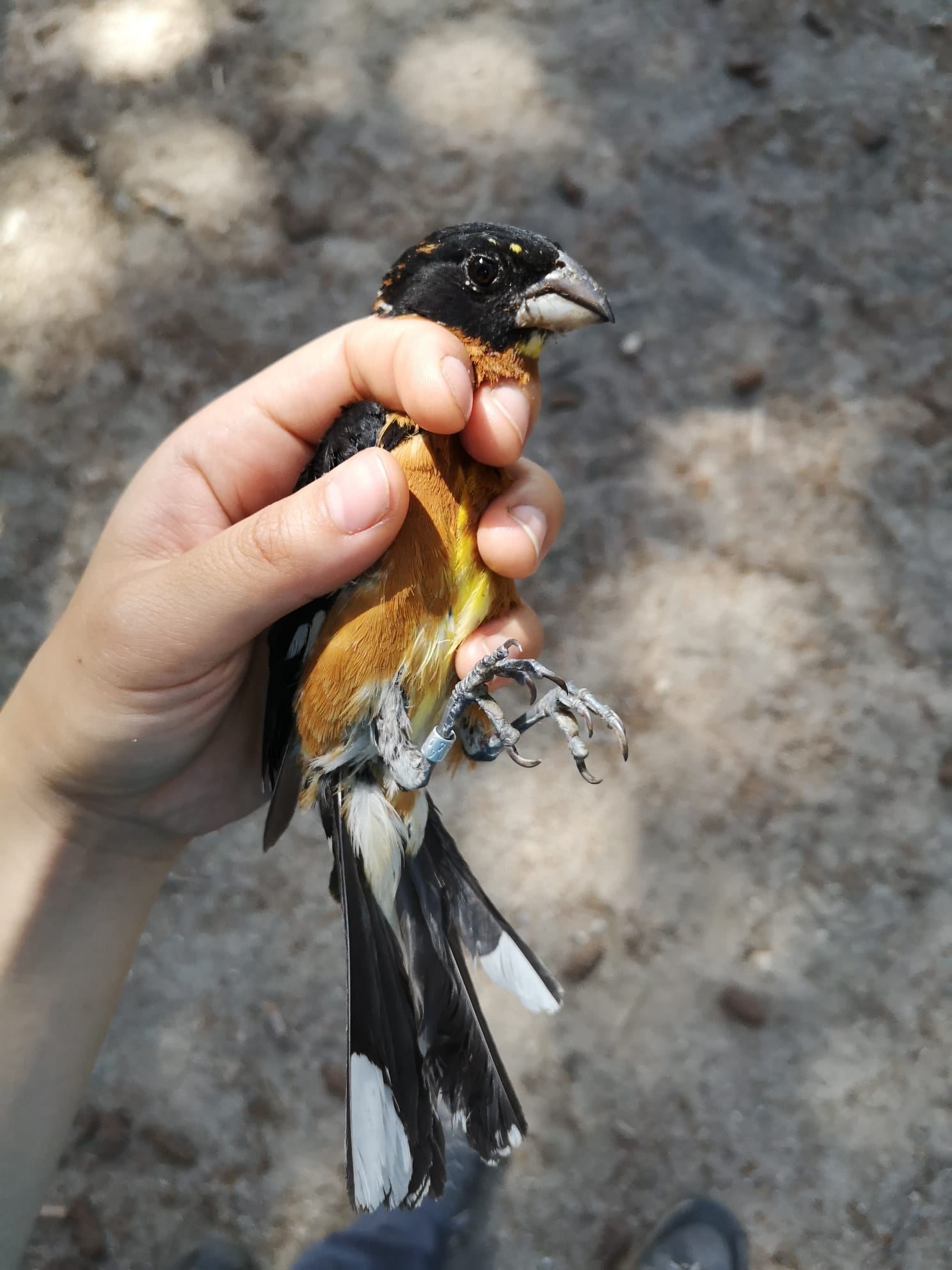
Looking at the photo from 2008 you can see his worn brown wing feathers: leftover juvenile primaries and secondaries he grew as a chick in the nest in 2007. And in 2022, it’s cool to see his band, worn a bit thin after years of weathering, and with a nice matte patina. You can see a few of the numbers, confirming he was in fact the bird. His wings are the dark black basic plumage of a mature adult male. The back of his head has a few white feathers now…are these the bird equivalent of gray hairs?
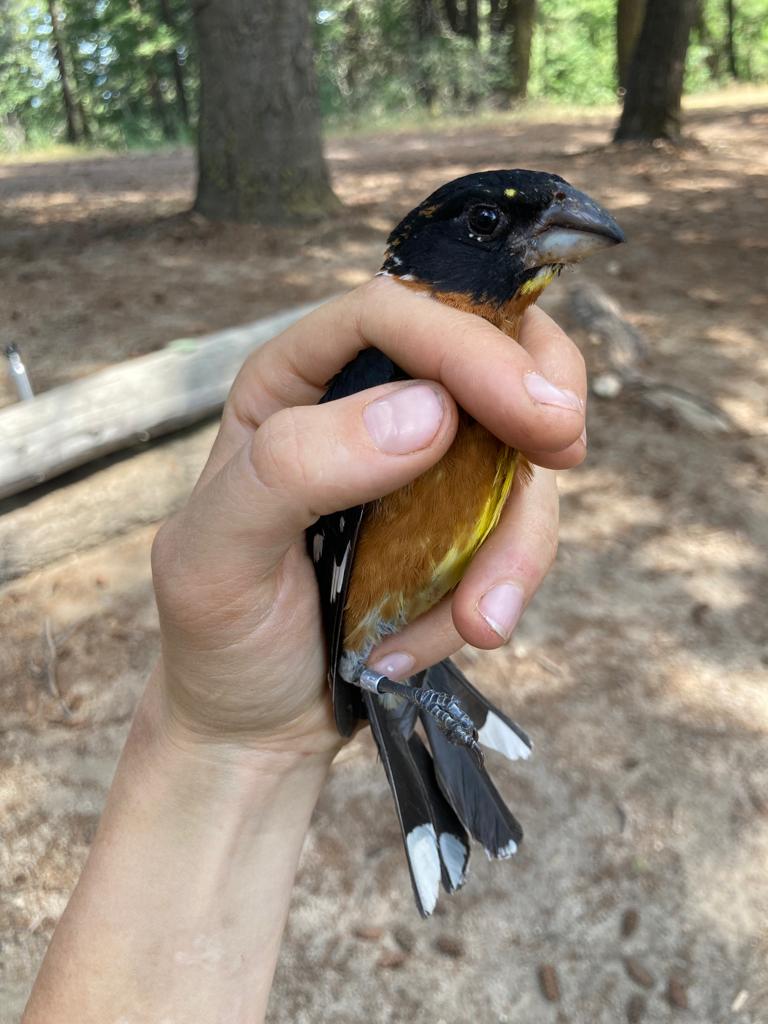
Most of the value in our data lies in the numbers, age ratios, and condition measurements we take on the birds we band as we seek to understand population-level trends. But, longevity records like this sure are exciting! Based on his species’ wintering range we presume a minimum of 2,000 miles traveled each year going to and from his winter and summer ranges. Over 15 years we estimate he traveled at least 30,000 miles, and could have easily reached 45,000 miles depending on where he spends the winter!
Along with impressing banders with his lifespan and migration prowess, knowing that this wise old bird chooses to come back to Lucky Peak says a lot about the value of this place for migratory birds. It’s definitely habitat worth protecting!
Grosbeak 199119015 takes flight!
In this video by Lucian Davis, the Gosbeak is released and takes flight in slow motion. There are no captions as there is no dialogue.
